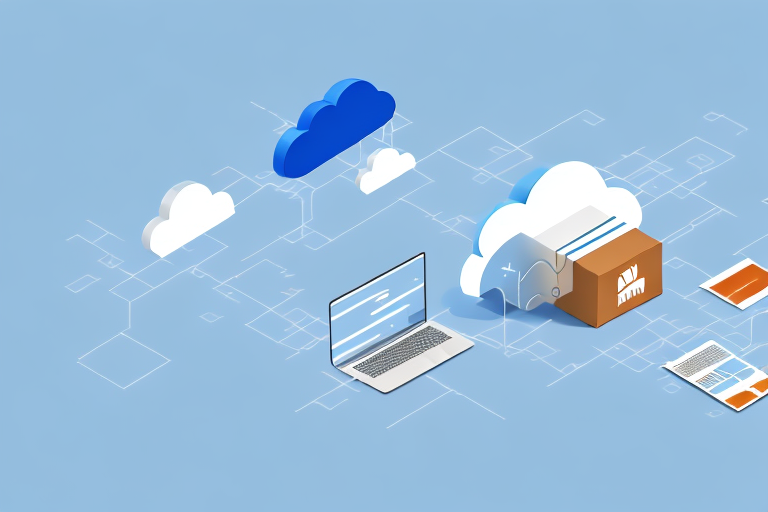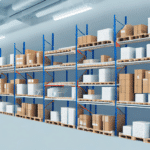Comparing Shipping Services: SaaS vs On-Premises – Which is Right for Your Business?
Choosing the right shipping service is crucial for businesses aiming to streamline their logistics and enhance customer satisfaction. One of the pivotal decisions involves selecting between a SaaS (Software as a Service) model and an On-Premises solution. This article delves into the differences between these two models, providing an in-depth analysis to help you determine which option aligns best with your business needs.
Understanding SaaS and On-Premises Shipping Models
Before making a choice, it's essential to comprehend the foundational differences between SaaS and On-Premises models:
- SaaS: Software is hosted in the cloud by a third-party provider. Businesses access the service via the internet, eliminating the need for local installation and maintenance.
- On-Premises: Software is installed and operated on the company's own servers. This model offers complete control over the software and its infrastructure.
Key Differences at a Glance
- Cost Structure: SaaS typically operates on a subscription basis, whereas On-Premises requires a significant upfront investment.
- Maintenance: SaaS providers handle updates and maintenance, while On-Premises models require in-house IT management.
- Scalability: SaaS offers greater flexibility for scaling, adapting quickly to business growth.
Benefits of SaaS Shipping Services
SaaS shipping solutions present numerous advantages for businesses:
- Cost-Effective: Lower initial costs since there's no need for expensive hardware or extensive IT infrastructure.
- Ease of Implementation: Quick setup with minimal technical expertise required.
- Scalability: Easily adjust your subscription based on business growth or seasonal demands.
- Integrated Features: Many SaaS platforms offer built-in integrations with popular e-commerce platforms like Shopify and WooCommerce, facilitating seamless operations.
Real-Time Tracking and Automation
Modern SaaS shipping services provide features such as real-time tracking, automatic label printing, and automated notifications, enhancing efficiency and customer satisfaction.
Advantages of On-Premises Shipping Services
On-Premises solutions offer distinct benefits, particularly for businesses with specific needs:
- Data Security: Complete control over sensitive shipping data, reducing the risk of external breaches.
- Customization: Greater ability to tailor the software to fit unique business processes and requirements.
- Integration: Seamless integration with existing internal systems, providing a unified operational environment.
- Performance: Potential for faster processing times as operations are handled locally without reliance on internet connectivity.
Control and Compliance
For industries with stringent compliance standards or specific data governance policies, On-Premises solutions offer the necessary control to meet regulatory requirements.
Cost Analysis: Evaluating Value for Your Business
Understanding the cost implications of each model is vital for making an informed decision:
SaaS Cost Structure
- Subscription-based pricing, often tiered based on features and usage.
- No need for upfront hardware investments.
- Predictable ongoing costs.
On-Premises Cost Structure
- Significant initial investment in hardware and software licenses.
- Ongoing costs for maintenance, updates, and IT personnel.
- Possible additional expenses for scalability and upgrades.
According to a Gartner report, the SaaS market continues to grow rapidly, highlighting its cost efficiency and flexibility as key drivers.
Scalability and Flexibility: Adapting to Growth
As businesses evolve, their shipping needs may expand or shift. Here's how each model accommodates growth:
SaaS Scalability
- Effortlessly add or remove user licenses based on demand.
- Flexible resource allocation without significant infrastructure changes.
On-Premises Scalability
- Scaling requires additional hardware or software investments.
- May involve longer implementation times to accommodate growth.
Flexibility in Customization
SaaS platforms offer customization through APIs and integrations, allowing businesses to adapt the software to their specific workflows. On-Premises solutions provide deeper customization opportunities, enabling tailored features to meet unique business processes.
Security Considerations: Protecting Your Shipping Data
Data security is paramount when handling shipping information. Both models offer distinct security advantages:
SaaS Security Measures
- Managed by dedicated security teams with regular updates and patches.
- Compliance with industry standards like GDPR and ISO certifications.
- Robust disaster recovery and backup solutions.
On-Premises Security Control
- Full control over security protocols and data handling practices.
- Ability to implement customized security measures tailored to specific needs.
- Reduced dependency on third-party security providers.
However, On-Premises models require a skilled IT team to manage and update security measures effectively, which can be resource-intensive.
Integration Capabilities: Seamlessly Working with Existing Systems
Effective integration with current systems ensures streamlined operations:
SaaS Integration Advantages
- Pre-built integrations with widely-used platforms and services.
- APIs available for custom integrations.
- Continuous updates ensure compatibility with new technologies.
On-Premises Integration Advantages
- Deep integration with legacy systems and proprietary software.
- Greater control over data flow between systems.
- Ability to design integrations that precisely fit business workflows.
For instance, businesses leveraging enterprise resource planning (ERP) systems can benefit from On-Premises solutions that tailor integrations to their specific requirements.
User Experience: Ease of Use and Accessibility
The user experience can significantly impact productivity and satisfaction:
SaaS User Experience
- Intuitive, user-friendly interfaces accessible from any device with internet connectivity.
- Regular updates introduce new features and improvements without disrupting user workflows.
- Support resources and customer service readily available.
On-Premises User Experience
- Customized interfaces tailored to specific business processes.
- Potentially steeper learning curves due to deeper customization.
- Dependence on internal IT support for troubleshooting and updates.
A Forrester report emphasizes that SaaS solutions often provide superior user experiences due to their focus on ease of use and accessibility.
Maintenance and Support: Ensuring Continuous Operation
Reliable maintenance and support are critical for uninterrupted shipping operations:
SaaS Maintenance and Support
- Automatic updates and maintenance handled by the provider.
- 24/7 customer support typically included in the subscription.
- Service level agreements (SLAs) ensure uptime and performance standards.
On-Premises Maintenance and Support
- Requires in-house IT teams to manage updates and troubleshoot issues.
- Potential for longer downtimes during maintenance windows.
- Support agreements with software vendors may be necessary for critical issues.
According to a TechRadar analysis, SaaS models generally offer more robust and accessible support options compared to On-Premises solutions.
Case Studies: Real-World Applications of SaaS and On-Premises Shipping Services
Examining how different businesses implement these models can provide valuable insights:
SaaS Success: Online Retailer
An online boutique specializing in handmade jewelry adopted a SaaS shipping service, integrating it with their Shopify store. This integration enabled real-time order tracking and automated label printing, enhancing customer satisfaction and increasing sales by 25% within the first year.
On-Premises Success: Manufacturing Giant
A large manufacturing company producing heavy machinery implemented an On-Premises shipping solution. By customizing the software to handle complex shipping requirements and integrating it with their existing ERP system, they reduced shipping errors by 30% and improved delivery times.
Making the Right Choice: Key Factors to Consider
When deciding between SaaS and On-Premises shipping services, consider the following factors:
- Budget: Assess both initial and ongoing costs.
- Scalability: Determine your business’s growth projections.
- Security: Evaluate data security needs and compliance requirements.
- Integration: Consider how the solution will integrate with existing systems.
- User Experience: Prioritize ease of use for your team.
- Maintenance: Decide whether you have the resources for in-house support.
Conclusion: Selecting the Optimal Shipping Services Model
Choosing between SaaS and On-Premises shipping services is a strategic decision that impacts your business operations, costs, and growth potential. By thoroughly evaluating each model’s advantages and aligning them with your business requirements, you can select a shipping solution that not only meets your current needs but also supports your future ambitions.
For a comprehensive assessment, consider consulting industry reports and engaging with software providers to understand how each option can be tailored to your specific business context.






















